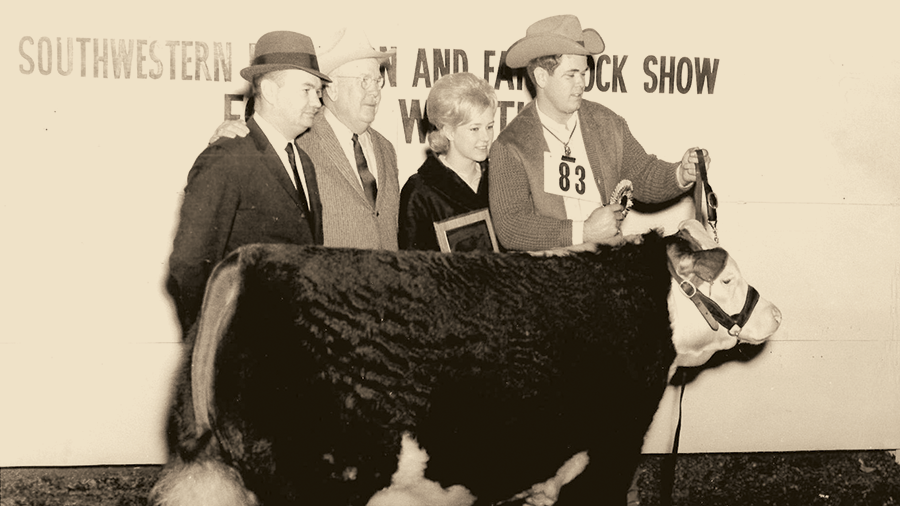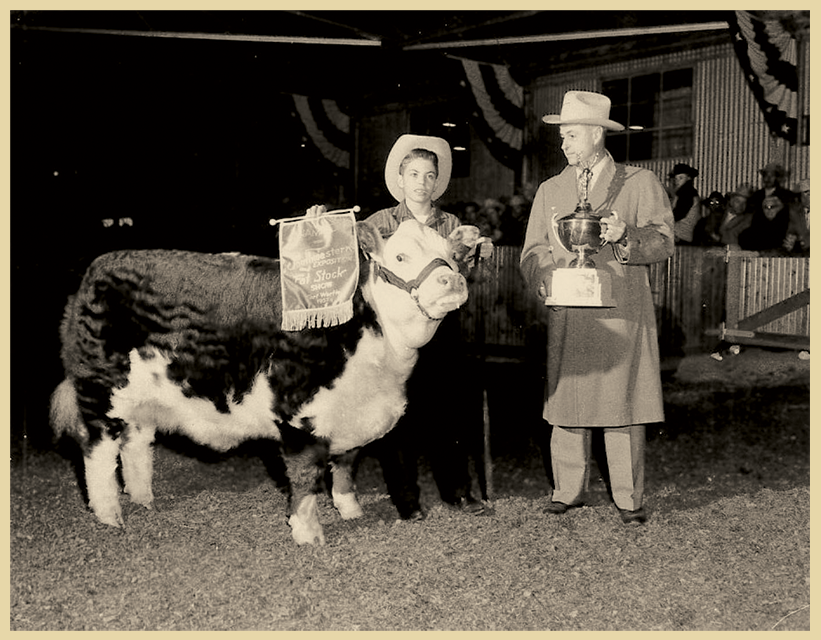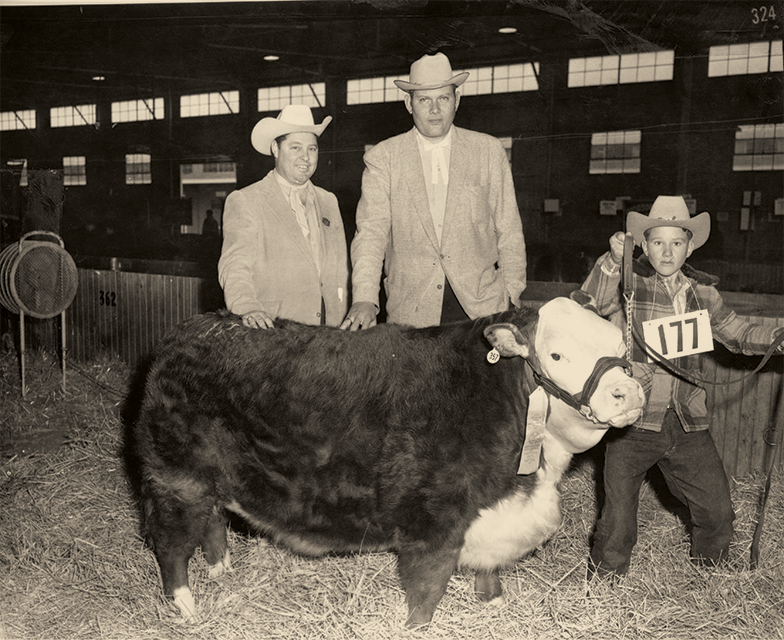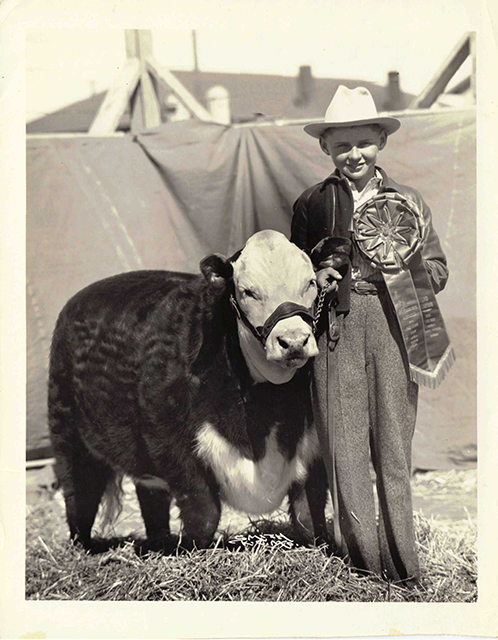
Since the Fort Worth Stock Show & Rodeo began in 1896, all livestock have been raised for human consumption, including the 1964 Grand Champion Steer, Jack.
The journey of award-winning steers at the Fort Worth Stock Show & Rodeo
By Natalie Lozano Trimble
Photos courtesy of Fort Worth Stock Show & Rodeo
It’s a fact of life—even award-winning steers eventually end up on a plate.
These animals are raised for human consumption, and the 2,000 shown during the 23 days of the rodeo comprises a fraction of the 30,000 or more harvested daily, says Matt Brockman, communications director for the Fort Worth Stock Show & Rodeo.
Brockman says the ultimate end for the livestock has remained the same since the first rodeo was held in 1896. Until 1942, it was a very short journey. The rodeo’s original location in the Stockyards meant the cattle would be processed at one of the two meat packing facilities at the end of East Exchange Avenue.
Today, it’s a longer trip with a stop or two.
The award-winning steers first head to Fort Worth Independent School District’s barn while awaiting DNA and drug testing. The DNA testing is to ensure that the animal initially registered is the same animal that was shown, says Philip Davenport, an agricultural teacher at Arlington Heights High School. The drug testing ensures the meat is safe for human consumption.
The barn is primarily used by Arlington Heights’ agriculture students, many of whom participate in Future Farmers of America. Sometimes the steers are used for a more hands-on education if the auction winner has donated them.
“We’ve done a comparison where we’ve shaved one whole side of a steer so we’ve shown how the long hair can hide imperfections,” Davenport says.
Arlington Heights has also partnered with North Side High School’s culinary program for an education trade: the Arlington Heights students shared how the animal was fed and raised, and the North Side students prepared different cuts of meat.
Just being able to see what the Grand Champion and Reserve Grand Champion look like allows the FFA students to improve their ability to judge steers. Judging is a competitive sport and some students may compete at the collegiate level. A few may even return to judge livestock at the rodeo.
“It kind of goes to the heart of why we have a junior steer show, and for that matter, a junior heifer show,” Brockman says. “They realize and appreciate the role that they’re playing and the role that could become their career.”



